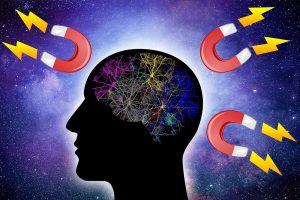Have you ever noticed that once something catches your attention, like a red car, you begin to see it everywhere? It is not that red cars have suddenly multiplied on the roads. What actually changes is your awareness. This experience is explained by what is known as the Red Car Theory, and it offers fascinating insight into how our brains work.
The Red Car Theory suggests that whatever you consciously focus on starts to show up more in your environment. The thing itself does not appear more often, but your brain becomes more alert to it. Our minds are constantly bombarded with information, and to manage this, we filter out most of it. When something becomes important or relevant to us, our brain brings it to the forefront more frequently.
This concept is easy to relate to. Think about a seafarer who hears about a rare type of ship or piece of equipment during a safety briefing. That same day or week, they might begin to notice that type of vessel or tool on multiple occasions. It was always there, but now their attention is drawn to it.
Psychologically, the theory is rooted in the principles of selective attention and perception. These mental processes determine what we notice and what we ignore. Once a subject is brought into focus, our brain naturally starts identifying it in places we might have previously overlooked.
Whether it’s something practical like a product or something emotional like a feeling or relationship pattern, what we choose to notice becomes more prominent. The Red Car Theory isn’t about changing the world around us. It’s about realizing how much power we have over what we see in it.
The Science Behind It:
Our brains are remarkable machines, constantly processing millions of bits of information every second. From sounds and smells to movement and color, the world around us is filled with stimuli. However, we are not aware of most of it. That is because the brain has a filtering system that helps us focus on what matters. Two key elements behind this filtering process are selective attention and the Reticular Activating System, often referred to as the RAS.
Selective attention is our brain’s natural way of prioritizing information. Imagine being in a crowded room full of noise and chatter. Even with all the background distractions, you are still able to focus on a single conversation or hear someone call your name from across the room. That is selective attention at work.
Now let’s look at the Reticular Activating System. This is a bundle of nerves located in the brainstem, and it plays a critical role in attention, alertness, and awareness. The RAS acts like a personal assistant, deciding which pieces of information are worth passing on to your conscious mind. Everything you see, hear, smell, or feel passes through this system before it reaches your awareness.
If you have ever started thinking about buying a specific model of car, and then suddenly noticed that same model everywhere, that is your RAS kicking in. Those cars were always there, but your brain did not consider them important until you gave it a reason to. The moment your interest in that car was triggered, the RAS started filtering for it, making it more visible in your surroundings.
This is where the Red Car Theory and neuroscience connect. What you focus on gets filtered in, while everything else fades into the background. The more attention you give something, the more your brain looks for it.
The Red Car Theory is not just a quirky observation. It is a glimpse into the way our minds prioritize the world around us.

The Frequency Illusion in Action:
The Red Car Theory is not just a clever idea. It plays out in everyday life more often than we realize. From the things we buy or the way we interpret events, our focus shapes our experience of the world in subtle but powerful ways.
Imagine someone mentions a certain personality trait, like being overly sarcastic or extremely judgemental. Once that trait is in your awareness, you start noticing it more often in the people around you. Sometimes this shift can change how you perceive others, because your attention is now tuned in to pick up on that specific behavior.
Even coincidences can feel more meaningful because of the Red Car Theory. Think about a time when you learned a new word, and then came across it multiple times in a short span. It might seem like an eerie alignment, but there’s a name for this experience: the Baader-Meinhof Phenomenon, also known as the frequency illusion.
This phenomenon occurs when you encounter something new or unfamiliar, and then suddenly start seeing it repeatedly. It’s not that the frequency has increased. Your brain is simply more alert to it. The Baader-Meinhof effect works hand-in-hand with the Red Car Theory, both showing how attention can shift our perception of reality.
Another relatable example is in parenting. A new parent, especially one concerned about safety, might start seeing potential hazards everywhere. From exposed outlets to small choking hazards, their heightened awareness brings these risks into sharp focus.
The takeaway here is that our focus has real influence over how we interpret and experience the world.
Red Car Theory and Manifestation:
There is a strong link between the Red Car Theory and the idea of manifestation, especially as it relates to the Law of Attraction. At the heart of both is a simple but powerful truth: what you focus on tends to grow in your awareness. This is not about magical thinking or wishing for things to appear out of nowhere. It is about understanding how attention can shape perception and open up real possibilities.
The Law of Attraction suggests that thinking positively about what you want helps bring those desires into your life. The Red Car Theory offers a practical explanation for how that might work. When you consistently focus on a goal, your brain begins to notice opportunities, people, and ideas that support it. These things were probably already there, but now they stand out because your attention has created a mental filter for them.
For example, someone who wants to start a business may begin noticing gaps in the market, useful articles, or people who share similar goals. The more they think about their vision, the more these relevant pieces seem to “appear.” That is not luck—it is selective attention doing its job.
The same principle works in reverse. If your thoughts are filled with doubt or fear, you are more likely to notice obstacles, risks, or reasons to give up, while someone with a positive and determined mindset will often spot chances to move forward. This is why mindset matters.
Consider two job seekers with the same skills. One believes they have value and stays open to new possibilities. The other believes they are unlucky and ignored. Over time, the first person is likely to pick up on more leads, have better interactions, and spot openings that the second person might miss entirely. Their attention is working in their favor.
Manifestation is not about bending reality with thought. It is about tuning your brain to recognize what matters. The Red Car Theory explains why some people seem to attract success while others feel stuck. It often comes down to where their focus is and how that focus affects what they notice and how they respond.
How to Use the Red Car Theory at Sea:
Life at sea can be intense and unpredictable, but it also offers a focused environment that’s perfect for applying the Red Car Theory. Before each contract, set clear goals—whether it’s earning a new certification, improving leadership skills, or working toward a promotion. Having a specific target helps your mind begin filtering for related opportunities and information.
Visual reminders in your cabin or workspace can keep your focus sharp. A sticky note about an upcoming exam, a photo representing your goal, or a checklist on your locker can all reinforce your intent. Over time, you’ll start noticing conversations, equipment, or chances to practice that connect directly to your goal.
Keep track of your progress. Small wins matter. Use your downtime to reflect on what’s catching your attention and why. This self-awareness not only sharpens your focus but also helps align your daily actions with your long-term vision.
Conclusion:
The Red Car Theory is not magic—it is simply how your brain filters information based on what you focus on. While it can sharpen your awareness, it also comes with risks like confirmation bias and overgeneralization. Still, understanding this mental filter can help you make clearer decisions, set better goals, and stay mentally sharp at sea. What you choose to notice truly shapes your experience. Amid the unpredictability of life onboard, attention and mindset remain powerful tools for success, growth, and clarity.




